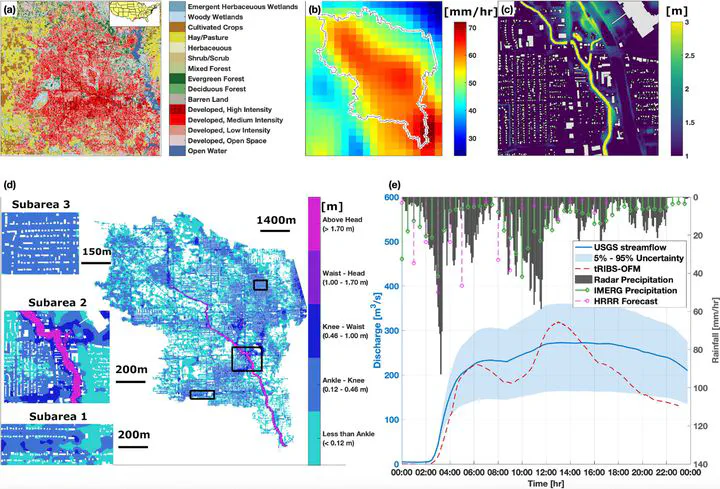Breaking Down the Computational Barriers to Real-Time Urban Flood Forecasting
Sep 29, 2021· ,,,,,,,,,,,,,,,,,,,·
1 min read
,,,,,,,,,,,,,,,,,,,·
1 min read
Valeriy Y. Ivanov
Donghui Xu
M. Chase Dwelle
Khachik Sargsyan
Daniel B. Wright
Nikolaos Katopodes
Jongho Kim
Vinh Ngoc Tran
April Warnock
Simone Fatichi
Paolo Burlando
Enrica Caporali
Pedro Restrepo
Brett F. Sanders
Molly M. Chaney
Ana M. B. Nunes
Fernando Nardi
Enrique R. Vivoni
Erkan Istanbulluoglu
Gautam Bisht
Rafael L. Bras

Abstract
Abstract Flooding impacts are on the rise globally, and concentrated in urban areas. Currently, there are no operational systems to forecast flooding at spatial resolutions that can facilitate emergency preparedness and response actions mitigating flood impacts. We present a framework for real-time flood modeling and uncertainty quantification that combines the physics of fluid motion with advances in probabilistic methods. The framework overcomes the prohibitive computational demands of high-fidelity modeling in real-time by using a probabilistic learning method relying on surrogate models that are trained prior to a flood event. This shifts the overwhelming burden of computation to the trivial problem of data storage, and enables forecasting of both flood hazard and its uncertainty at scales that are vital for time-critical decision-making before and during extreme events. The framework has the potential to improve flood prediction and analysis and can be extended to other hazard assessments requiring intense high-fidelity computations in real-time.
Type
Publication
Geophysical Research Letters
In this work, we developed a real-time high-fidelity flood forecasting framework using Uncertainty Quantification Tookit.